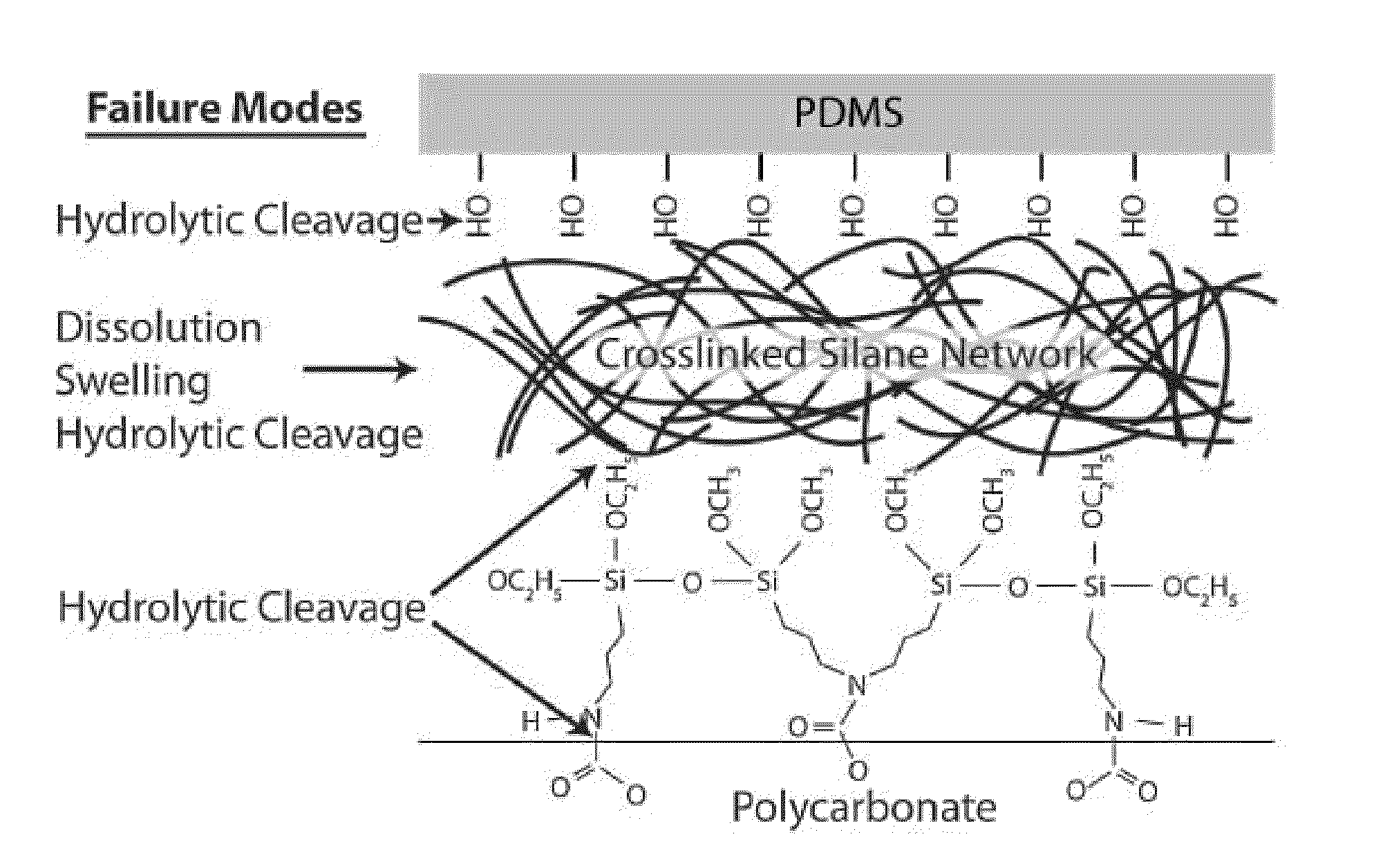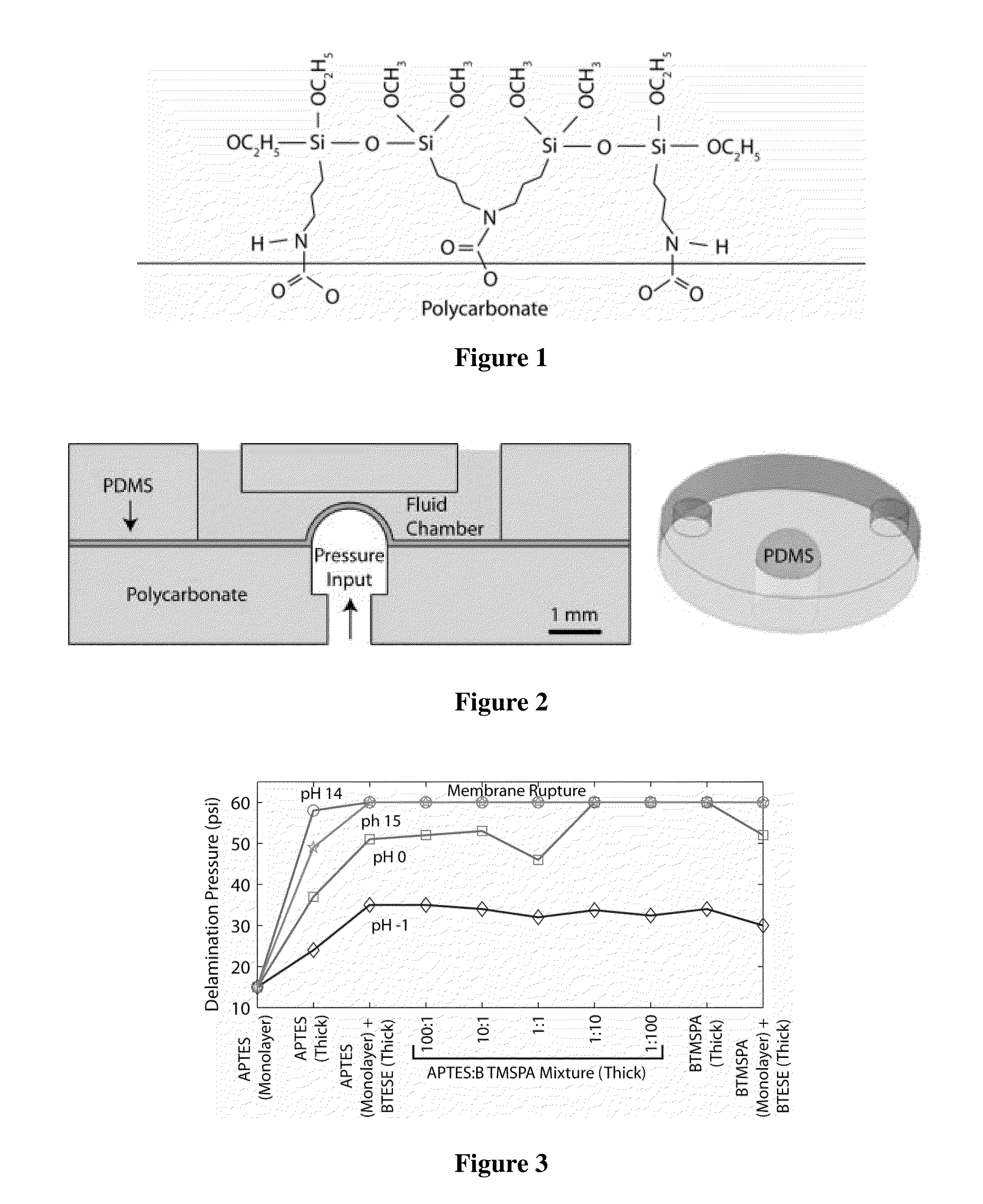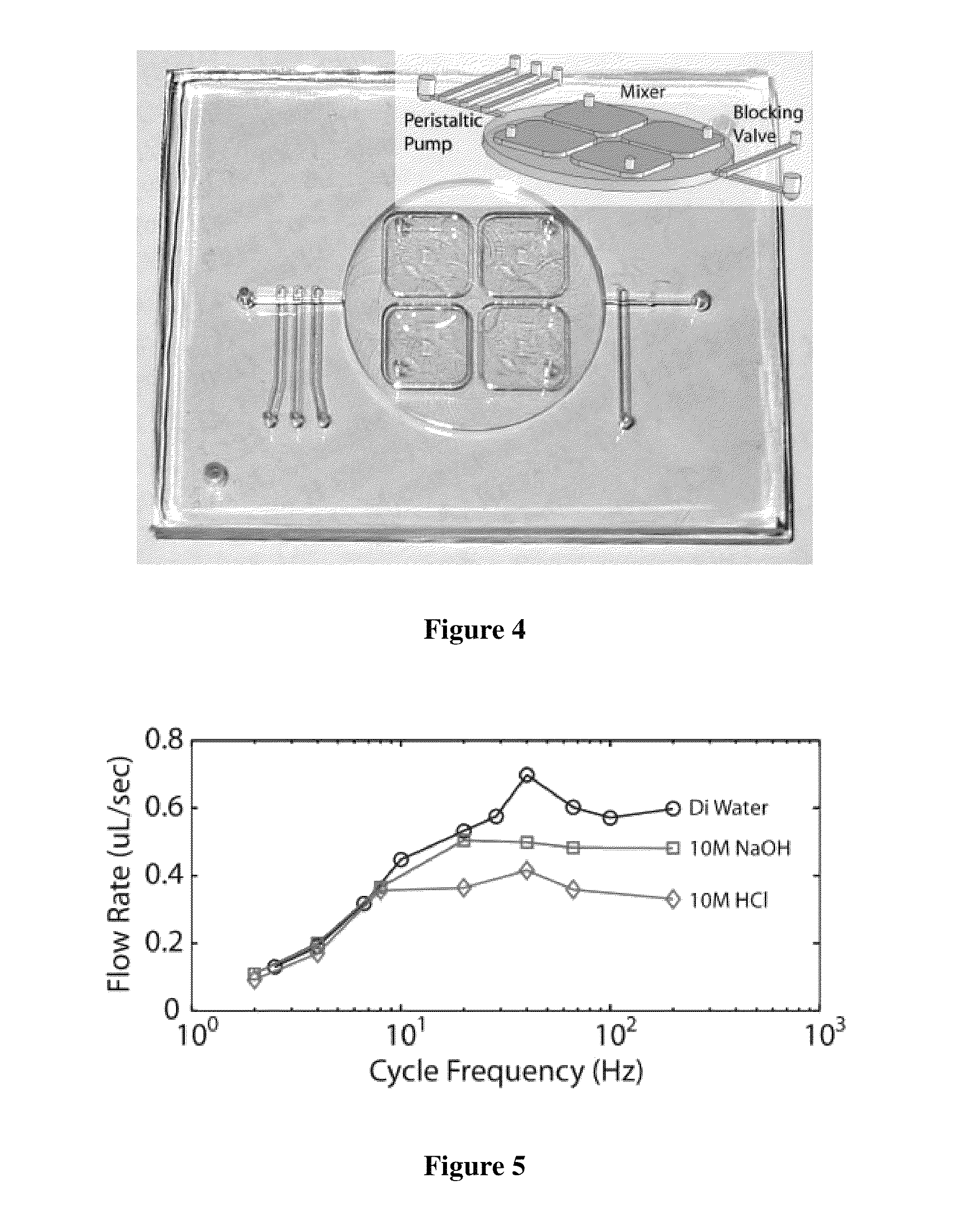Method of hydrolytically stable bonding of elastomers to substrates
a technology of elastomers and hydrolysis stable, which is applied in the direction of photomechanical treatment, precision positioning equipment, silicon organic compounds, etc., can solve the problems of plastic substrate breakdown, aqueous and chemically harsh environment data is not available for the published process, and the induced bond failure and delamination under pressure conditions below 15 psi
- Summary
- Abstract
- Description
- Claims
- Application Information
AI Technical Summary
Benefits of technology
Problems solved by technology
Method used
Image
Examples
example 1
A Molecule Comprising Two Silane-Derivative Groups for Enhanced Bonding of Elastomer to Plastic
[0164]Two molecules containing bis-silanes derivatives were investigated for improving bond strength: BisTriEthoxySilylEthane (BTESE) and Bis(TriMethoxySilylPropyl)Amine (BTMSPA). For BTESE, primers consisted of a two step process, wherein a molecule bearing one functional silane-derivative was first coated onto the plastic substrate for covalent bonding. This step was followed by coating with BTESE. Separately, in a one step coating process, a mixture of two molecules was used. The mixture contained one molecule bearing one functional silane-derivative and one molecule bearing two-functional silane-derivative molecule. The molecule bearing one silane-derivative was APTES and the molecule bearing two silane-derivative was Bis(TriMethoxySilylPropyl)Amine (BTMSPA). Coating a substrate by this mixture resulted in a thick single step coating. The coating layers were explored for its effects on...
PUM
| Property | Measurement | Unit |
|---|---|---|
| thickness | aaaaa | aaaaa |
| thickness | aaaaa | aaaaa |
| temperature | aaaaa | aaaaa |
Abstract
Description
Claims
Application Information
 Login to View More
Login to View More - R&D
- Intellectual Property
- Life Sciences
- Materials
- Tech Scout
- Unparalleled Data Quality
- Higher Quality Content
- 60% Fewer Hallucinations
Browse by: Latest US Patents, China's latest patents, Technical Efficacy Thesaurus, Application Domain, Technology Topic, Popular Technical Reports.
© 2025 PatSnap. All rights reserved.Legal|Privacy policy|Modern Slavery Act Transparency Statement|Sitemap|About US| Contact US: help@patsnap.com



